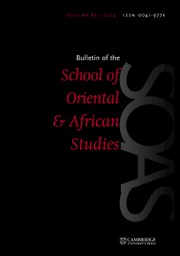Crossref Citations
This article has been cited by the following publications. This list is generated based on data provided by Crossref.
Oulhadj Laceb, Mohand
2013.
La notion d’emphase dans le champ phonétique les consonnes emphatiques.
Études et Documents Berbères,
Vol. N° 32,
Issue. 1,
p.
149.
Ntelitheos, Dimitrios
and
Leung, Tommi
2021.
Experimental Arabic Linguistics.
Vol. 10,
Issue. ,
p.
1.


